
A cap lining machine, also known as a cap lining or cap wadding machine, is a type of equipment used in the packaging industry to apply liners or wadding materials to the inside of caps or closures. These machines are commonly used in industries such as pharmaceuticals, food and beverage, cosmetics, and chemicals.
The primary purpose of a cap lining machine is to ensure product safety, integrity, and freshness by creating a hermetic seal between the cap and the container. The lining material, which is usually made of materials like foam, paper, plastic, or aluminum foil, acts as a barrier against leakage, contamination, or tampering. It helps to preserve the quality and shelf life of the product by preventing contact between the product and the cap material.
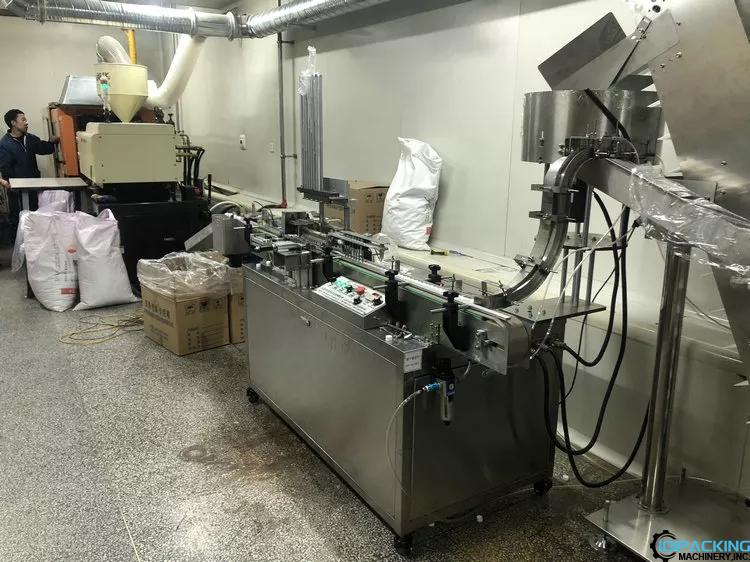
Cap lining machines typically consist of a conveyor system, a cap feeding mechanism, a lining material dispenser, and a sealing unit. The caps are fed into the machine through the conveyor system, and the lining material is dispensed and applied to the inner side of the cap. The sealing unit then presses the cap against the container, creating a secure seal.
These machines can handle different types of caps, closures, and liners, making them versatile for various packaging needs. They can operate at high speeds and are designed to ensure precision and accuracy in the application of the lining material.
Cap lining machines offer several benefits, including improved product safety, extended shelf life, reduced risk of leaks or contamination, and enhanced product presentation. They also enhance consumer confidence by providing clear evidence of the product's integrity and tamper-evident features.
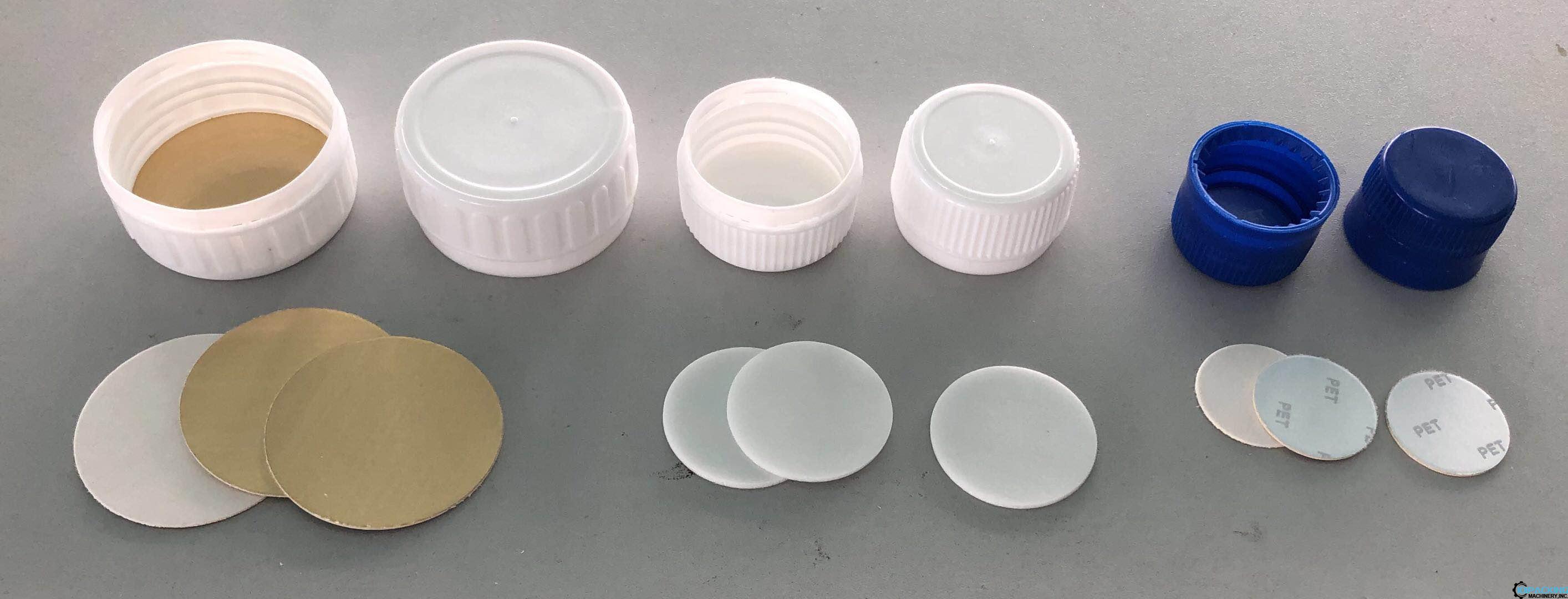
The working principle of a cap lining machine typically involves the following steps:
1.Cap Detection and Feeding: The machine uses sensors or mechanical mechanisms to detect the presence of caps and feed them into the lining station. This can be done through a hopper or a conveyor system.
2.Liner Material Dispensing: The machine dispenses the liner material from a roll or stack. The material is fed into the lining station, where it is cut into the desired shape and size.
3.Lining Application: The cap is positioned in a designated area, and the liner material is applied to the inner side of the cap. Different mechanisms can be used depending on the machine's design, such as suction cups, pick-and-place tools, or adhesive rollers. The liner material is accurately placed onto the cap to ensure proper coverage.
4.Compression and Sealing: The lined cap then moves towards the sealing unit. This unit consists of pressure plates or rollers that compress the cap against the container, creating a secure seal. The pressure applied depends on the type of cap and container being used.
5.Inspection and Sorting: After sealing, the caps may pass through an inspection station to check for proper lining application and seal integrity. Any caps with defects or incomplete lining may be rejected or sorted out for rework.
6.Packaging and Labeling: Once the caps pass inspection, they can be further processed for packaging and labeling, if required.
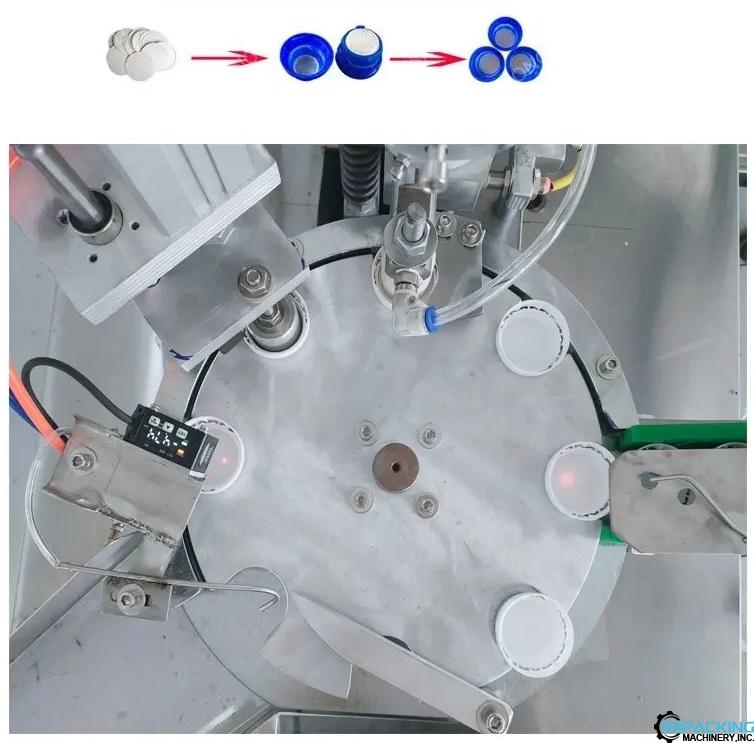
The working principle of a cap lining machine is focused on automating and streamlining the process of applying liners to caps. It involves precise cap feeding, liner material dispensing, accurate lining application, seal creation, and inspection to ensure high-quality and reliable packaging. The specific mechanisms and technology used can vary depending on the machine's design and capabilities.
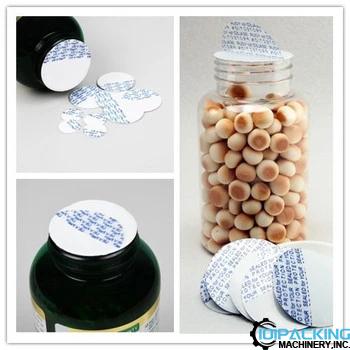
There are several types of cap lining machines available in the market. The specific type of cap lining machine may vary depending on factors such as the industry, cap size and type, liner material, and production requirements. Some of the commonly used types include:
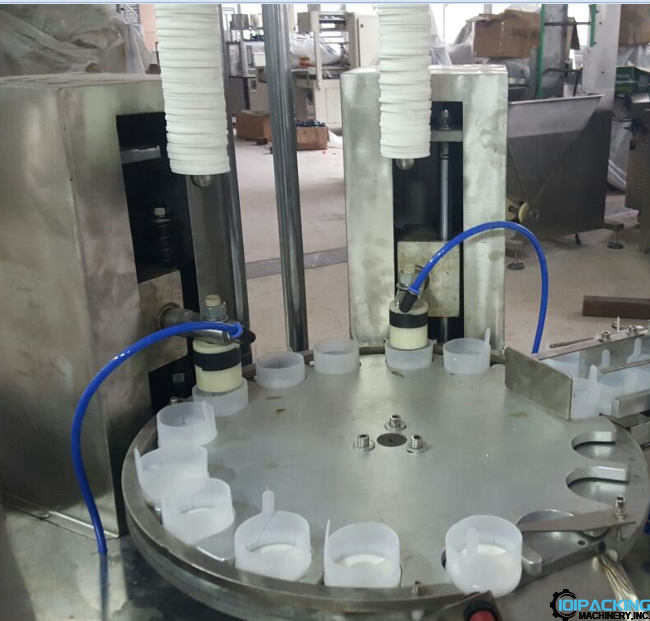
1.Rotary Cap Lining Machines: These machines feature a rotating disc or turret that holds the caps in place as they move through the lining station. The liner material is dispensed and applied to the caps as they rotate, ensuring accurate and consistent lining application.
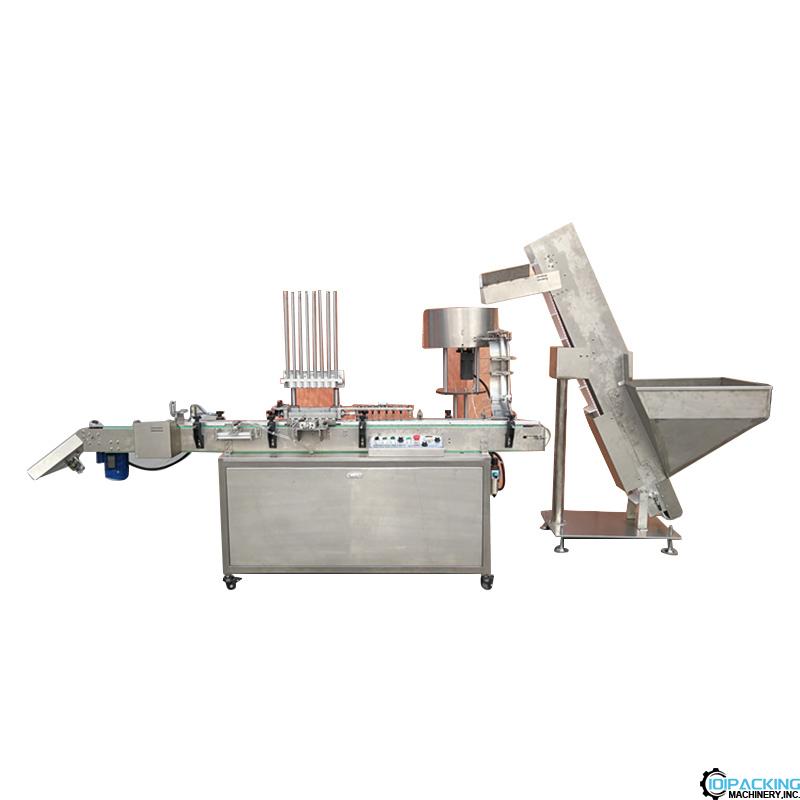
2.Linear Cap Lining Machines: Linear cap lining machines operate in a straight line, with caps passing through the lining station one by one. This type is suitable for applications with lower production requirements or limited space.
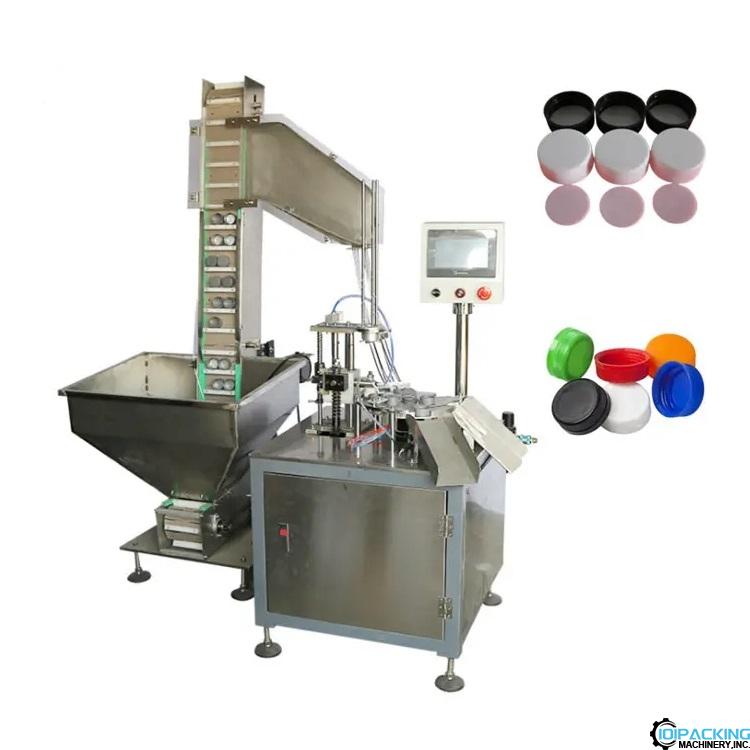
3.Glue Cap Lining Machines: Glue cap lining machines, also known as adhesive cap lining machines, use glue or adhesive to attach the liner material to the cap. These machines apply a thin layer of adhesive onto the cap or liner material, which binds them together upon contact.
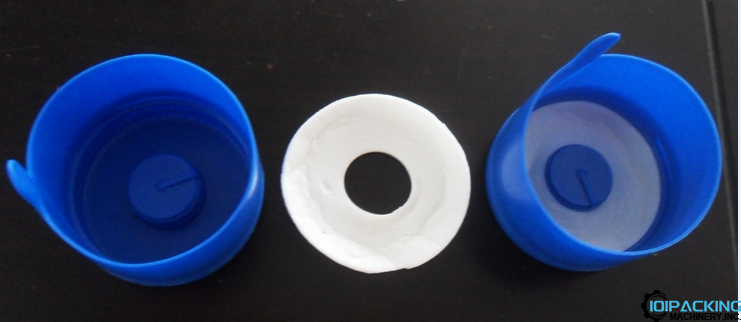
4.Compression Cap Lining Machines: Compression cap lining machines use pressure plates or rollers to compress the lined cap against the container, creating a tight and secure seal. This type of machine is often used for applications that require a higher level of seal integrity.
These are just a few examples of the types of cap lining machines available. Each type offers specific advantages and is suited for particular applications. Manufacturers can choose the machine that best fits their production requirements, cap size, liner material, and other factors to achieve optimal sealing and packaging outcomes.
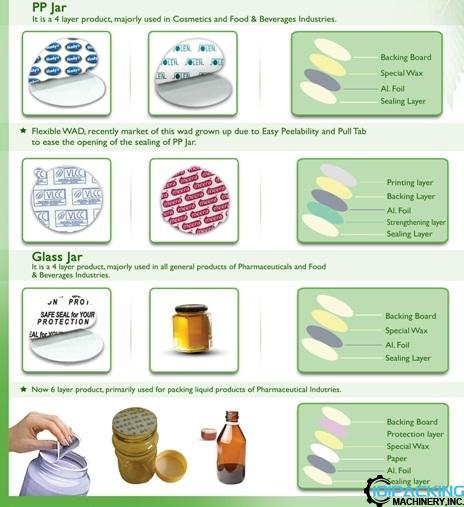
There are several types of cap wadding or liner materials used in the packaging industry. Here are some common kinds:
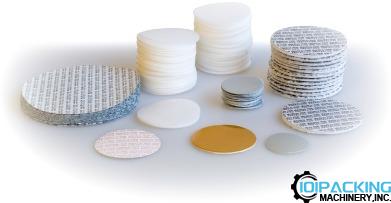
1.Foam Wadding: Foam wadding is a popular choice for cap liners as it provides a reliable seal and excellent resistance to moisture, chemicals, and gases. It offers cushioning properties and helps prevent leakage and product contamination.
2.Induction Seal Liners: Induction seal liners are made from materials like aluminum foil, plastic laminates, or paperboard coated with a layer of heat-sealable material. These liners are used with induction cap sealers, which apply heat to create a hermetic seal when the cap is applied to the container.
3.Pressure Sensitive Liners: Pressure-sensitive liners are commonly used in closures for jars and bottles. These liners consist of a foam or board material coated with an adhesive layer. When the cap is screwed onto the container, the adhesive adheres to the rim, creating a secure seal.
4.EPE Liners: Expanded polyethylene (EPE) liners are lightweight and flexible foam liners that provide cushioning and resistance to moisture and chemicals. They are often used in applications where product protection and leakage prevention are critical.
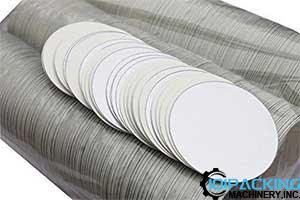
5.PVC Liners: Polyvinyl chloride (PVC) liners offer good chemical resistance and flexibility. They are commonly used in the pharmaceutical and chemical industries to ensure product integrity and prevent contamination.
6.PE Liners: Polyethylene (PE) liners are known for their moisture resistance and versatility. They can provide an effective seal for a wide range of products, including cosmetics, toiletries, and food and beverage items.
7.Cork Liners: Cork liners are made from natural cork material and are often used in liquor and wine bottle closures. They provide a tight seal, keeping the contents fresh and preventing leakage.
8.Pulp and Paperboard Liners: Pulp and paperboard liners, typically made from materials like pulpboard or cardboard, offer a barrier against moisture, oxygen, and light. They are commonly used in food and beverage packaging to maintain product freshness and integrity.
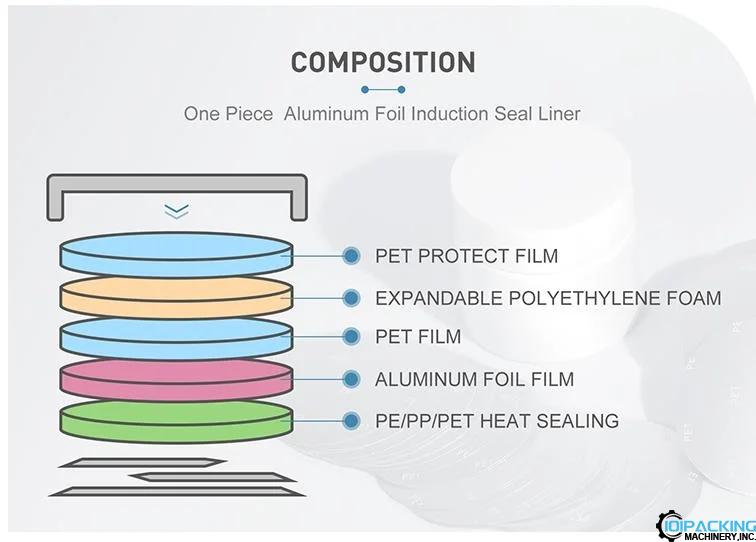
These are just a few examples of the various types of cap wadding or liner materials available. Each type has its own distinct properties and is suitable for different packaging requirements. The choice of wadding material depends on factors such as product compatibility, moisture protection needs, tamper-evident requirements, and industry regulations.
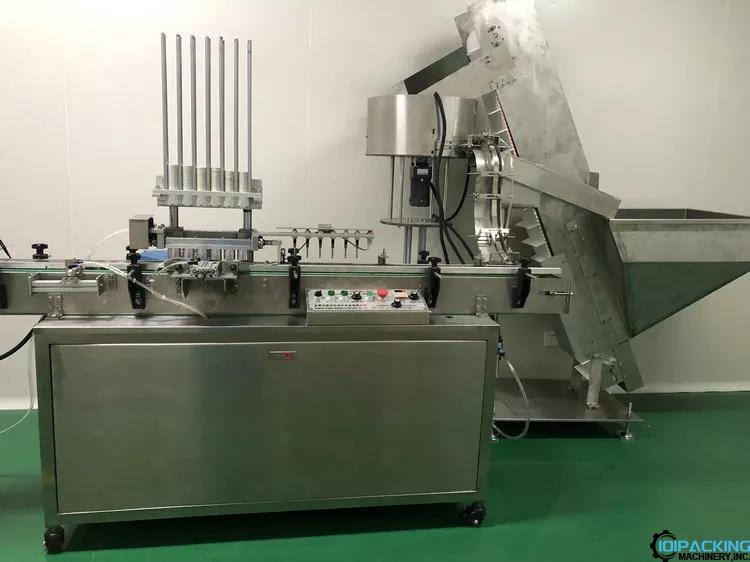
In the fast-paced world of packaging, ensuring product safety, quality, and freshness is of paramount importance. One crucial aspect of achieving this is the effective sealing of caps or closures. Cap lining machines have emerged as indispensable equipment in the packaging industry for creating a hermetic seal between caps and containers. These machines play a vital role in maintaining the integrity of various products, from pharmaceuticals to food and beverages. In this article, we will explore the significance of cap lining machines and how they enhance packaging integrity.
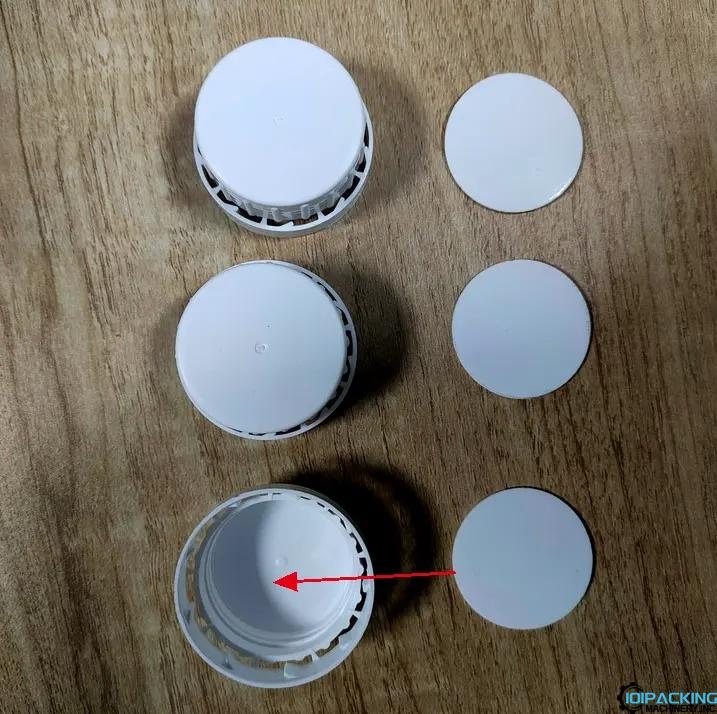
Preserving Product Quality and Safety:
The primary purpose of cap lining machines is to safeguard products against leakage, contamination, and tampering. The application of liner materials, such as foam, paper, plastic, or aluminum foil, on the inner side of the cap provides a barrier between the product and the cap material. This barrier prevents any potential interaction, ensuring product safety and freshness. By creating an effective seal, cap lining machines help prolong the shelf life of perishable goods, maintain the potency of medications, and preserve the flavor and aroma of food and beverages.
Precision and Accuracy:
Cap lining machines are designed to operate at high speeds while ensuring precision and accuracy in the application of liner materials. With advanced mechanisms, such as suction cups, pick-and-place tools, or adhesive rollers, these machines can apply liners with consistent placement and coverage. This consistent application ensures a tight seal, leaving no room for leakage or contamination.
Tamper-Evident Features:
In an era where consumer trust is paramount, cap lining machines provide an additional layer of security by incorporating tamper-evident features. Some machines can apply tamper-proof seals, such as induction seals or tear bands, on caps. These seals provide visible evidence of tampering, assuring consumers that the product is safe and secure. Tamper-evident features not only enhance consumer confidence but also serve as a deterrent to potential tampering and counterfeiting.
Versatility for Different Applications:
Cap lining machines are highly versatile and can handle various types and sizes of caps and liners. They can be adapted to accommodate different packaging requirements across industries. Whether it's the pharmaceutical sector with its stringent regulations, the food industry with its need for oxygen and moisture barrier properties, or the cosmetic industry with its emphasis on product presentation, cap lining machines can be tailored to meet specific needs. This flexibility allows manufacturers to optimize their packaging processes for different products, ensuring consistent quality across their product range.
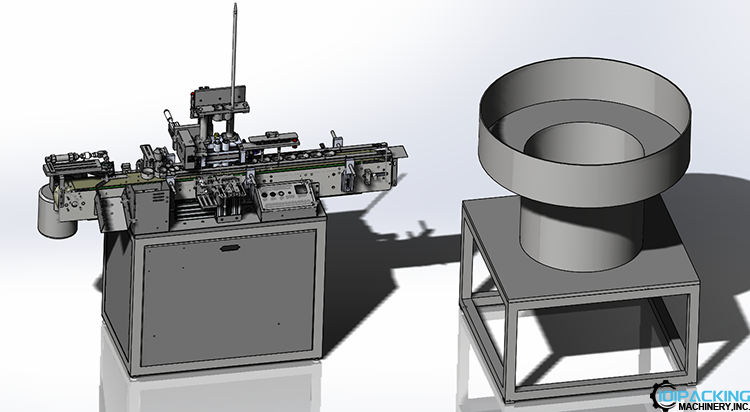
Conclusion:
Cap lining machines have revolutionized the packaging industry by enhancing product integrity, safety, and freshness. With their ability to create hermetic seals, precise application of liner materials, and tamper-evident features, these machines ensure that packaged products reach consumers in optimal condition. From pharmaceuticals to food and beverages, cap lining machines have become an essential component of packaging lines, contributing to the overall quality and trustworthiness of the products we consume. As the packaging industry continues to evolve, cap lining machines will undoubtedly play a crucial role in meeting consumer demands for transparency, safety, and convenience.
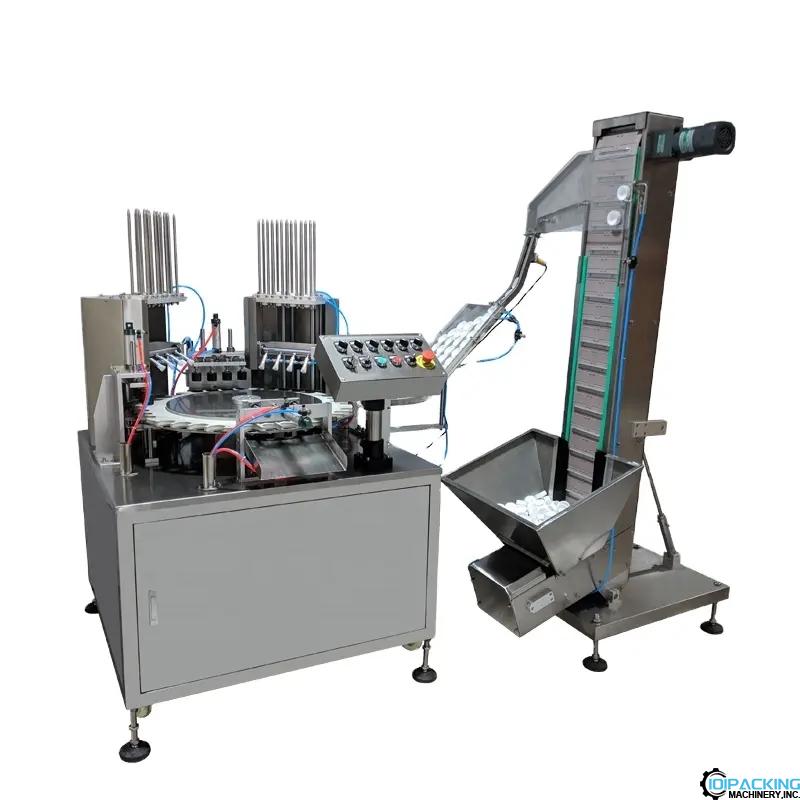
Contact: 101Packing
Phone: +86 198 7511 8892
E-mail: info@101packing.com
Add: 5th Floor, Outside Building, Shangxue Tech Park, Jihua Road, Longgang District, Shenzhen,Guangdong,China